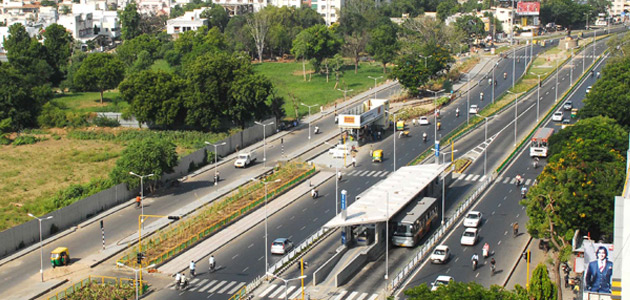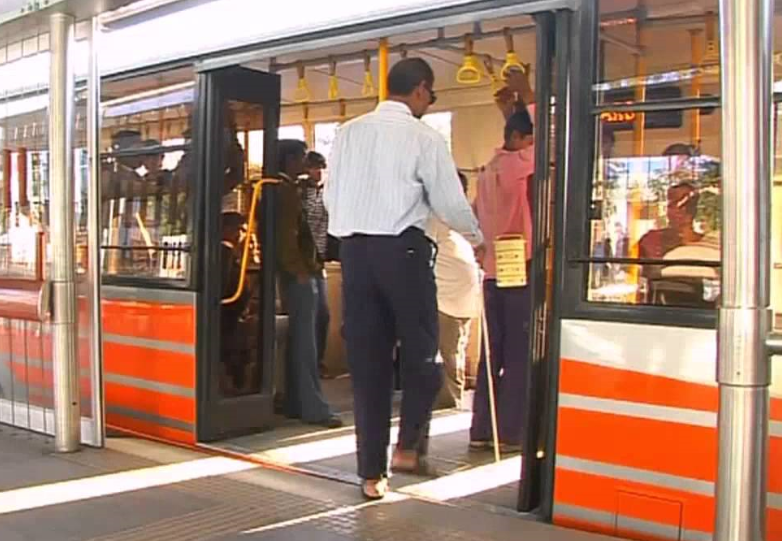With a population of more than 1.2 billion, India is likely to overtake China in terms of population in the coming years. India had and has many multi modal transit systems. We have trams, buses, metro’s, Suburban trains, ferries, which are signatures of some of our cities here. We could still see trams running in Kolkata, EMU’s which are the nerve centres in Mumbai and Chennai and also the first metro system in India in Kolkata is still running strong. But the biggest last mile connectivity is still our buses. Buses are the cheapest mode of transit system and have the lowest infrastructure costs. Buses have graduated from regular sizes say a 10m to 18m as well as 8m and less. We have seen them being deployed on need basis and requirement specific to various routes in many cities. Still, not many have understood the actual potential of these buses.
BRTS as a system hasn’t taken a big shape in India yet. We are either a hit or a miss. If Ahmedabad Janmarg Limited is one of the benchmark systems in the world, Delhi BRTS which was started way before AJL is now officially scrapped. There is no plan for BRTS in cities like Chennai and Bangalore still. Every city including smaller cities like Cochin is now investing in Metros. But low hanging fruits like BRTS are not even considered in the project level to decide whether they are feasible or not.
Planning can never be thought of with a single mode of transport system. The simple objective of these systems should be to promote public transport and to ensure people use it more effectively and most importantly every mode is interconnected and so that there is no bottle neck in any system. This means each mode should equally be used by public effectively. Elevated MRTS corridor in Chennai still after more than a decade carries less than half of what was intended to carry. There is absolutely no connection between MRTS and MTC and so there is no interconnectivity for passenger to switch from MRTS to MTC and hence as a system it’s not fully utilized. How about starting from our door step picked up by a mini bus to the nearest BRTS station, travel 5 kms in less than 15 mins to reach our office and then hangout with friends in the evening for a party in a ferry and return home in a metro. Everything with a simple, single, prepaid travel access card. This is not a scene from Director Shankar or Rajamouli in which everything can be reality. But this is close to reality if executed at macro level.
Now there is a huge sway towards Metros, and tier II cities like Cochin with a population just over 2 million are awarded with these systems. Cost of Metro construction is somewhere between Rs.200 crores for an open ground and almost double for an underground lane. There is no doubt that these are the fastest mode of transport but at what cost? Should it be a bus? There is no doubt that bus can only fulfill the last mile connectivity. Simplest reason being it’s the cheapest to acquire, requires the simplest expertise to handle and most importantly the cheapest mode, versatile and next door transport system. But here we never think about the bus and is always omitted for simple reasons like appearance, poor maintenance, prone to breakdowns and are unreliable during peak hours.
The problem is not the bus but the system as a whole the way it’s handled. So, a system consisting of exclusively designed buses with a dedicated lanes, air-conditioned, smart cards, centralized control room, GPS enabled public addressing systems, more room for standing, peripheral seating, convenient boarding and alighting with large size sized doors, access control stations and world class convenient facilities like wash rooms, parking and travel, provision and access for physically challenged people, all this possible with a simple rule “Bus First – Follows Rest”.
“Bus First – Follows Rest”:
The rule is basically to facilitate decisions wherever and whenever ambiguity arises. Say large road junctions come within the system of BRT and this is going to be an important decision following “Bus First – Follows Rest” rule, an elevated road corridor to be planned. It need not be a six lane or eight lane, but a simple single lane to facilitate bus movement across the junction. Also a dedicated elevated road corridor only for buses, wherever required to ensure system flow is uniform and ensures the smallest turnaround time or rather trip time.
When we follow the rule ““Bus First – Follows Rest”, it should be noted that peripheral traffic should be diverted or planned in a way to facilitate bus travel and shelters. Similarly bus shelters should be planned in a place where it is more convenient and ensures quick movement of people which is always a problem in many sub-urbans and metros.
Exclusively designed Buses:
Thanks to UBS-2 for making the bus manufacturer to go back to the drawing board for a product which they were selling for the past 50 years. That is a huge makeover which has simply fast forwarded our bus designs to 10 years. Similarly buses should be made fit to run in BRTS.
When we speak about buses we still think of either going for swanky designed air-conditioned low floor buses costing a crore plus or a regular Non AC bus designed for nothing. There should be a bus designed for everyone, and everything. We simply can’t operate a premium low floor bus in selected routes to satisfy only a group of people. We will require more number of essentially designed buses with right cost per km so that it satisfies every one in the society.
Flat floor is the first and prime factor that can facilitate quick boarding and alighting even when the bus is crowded. A large number of low floor buses used are best suited for open roads where boarding and alighting takes place from ground level. They have the lowest flat floor and cost wise the highest. So an ideal cost effective solution shall be to have regular floor buses with maximum flat floor space in the saloon to facilitate more people travelling yet at a fairly low ticket price. In case of BRTS, having dedicated bus shelters means that we can conveniently raise the floor height of shelters to match the bus floor. This will ensure even if the floor height of buses are higher, convenience of boarding and alighting is not compromised.
Also technically a high floor bus is cheaper to acquire in comparison to a low floor or low entry bus. A low floor one costs between Rs. 80 Lakhs to 1 crore and a regular floor bus is less than 50% of it. So, for a given budget, effectively twice the number of buses can be purchased.
If Ola and Redbus can change the way we travel, it’s quite possible that a system with buses can be conveniently designed, developed, adopted, run and maintained in a larger scale offering low cost of travel.


